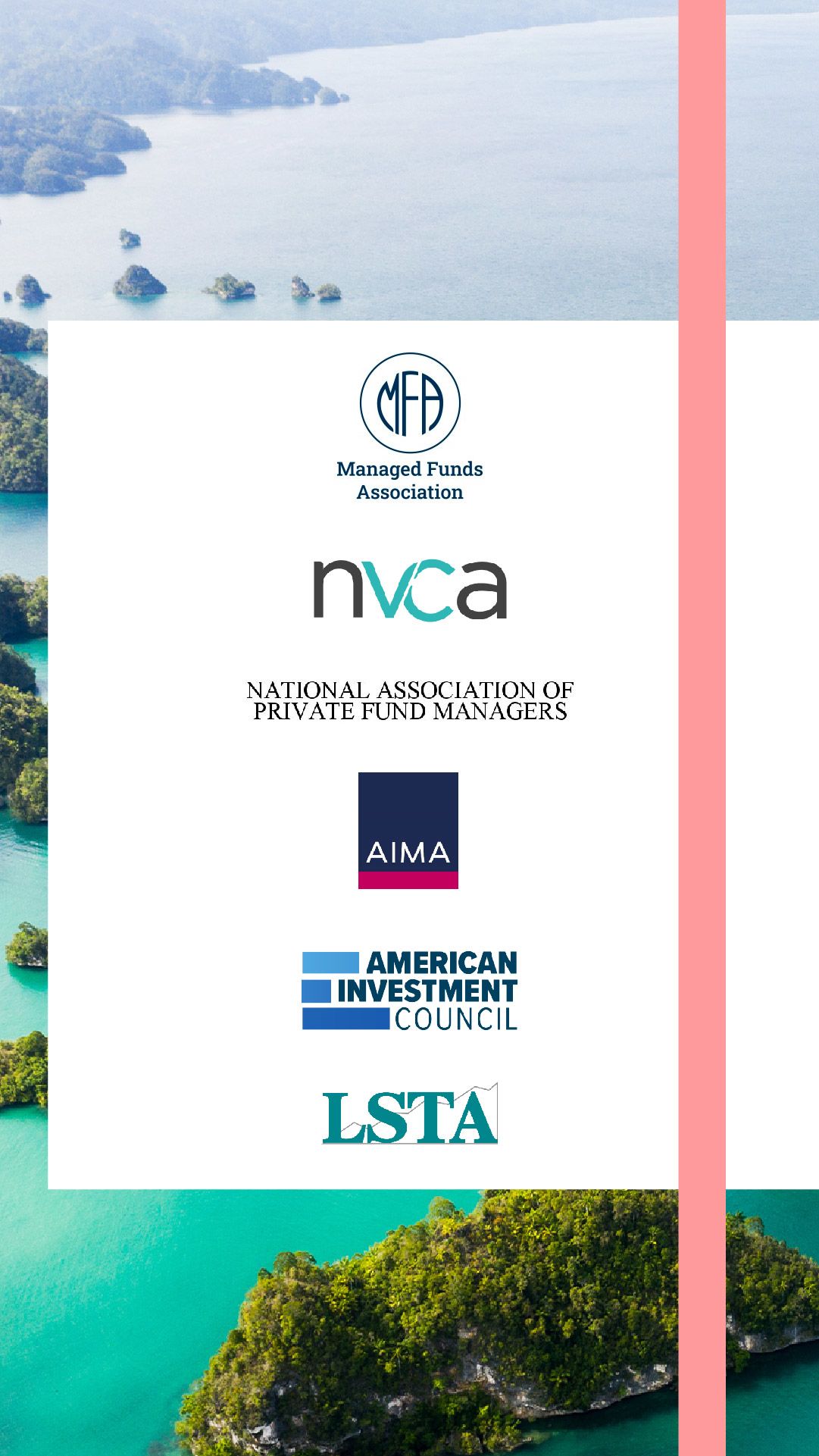The “Preferential Treatment Rule” Revisited

On August 23, 2023, the SEC adopted a suite of new rules relating to private fund advisers (the “Private Fund Adviser Rules”) in the most significant regulatory overhaul of the industry since the global financial crisis1. While the final rules relaxed some of the proposed restrictions to be more consistent with the SEC’s historical disclosure and consent-based approach to the regulation of private funds and advisers, the final Private Fund Adviser Rules remain onerous, prescriptive and in some cases prohibitive.
In a prior edition of this bulletin, we took a closer look at one of the proposed rules that had caused particular consternation in the industry – the rule that would prohibit advisers from granting particular investors certain preferential terms and require disclosure of others2. As with some of the other Private Fund Adviser Rules, the final preferential treatment rule (the “Preferential Treatment Rule”) reflected some concessions in response to the deluge of comment letters3, but still poses significant interpretation and implementation issues for advisers and investors alike.
Now that the SEC has adopted the final Private Fund Adviser Rules, we turn again to the Preferential Treatment Rule to examine what has changed and what obstacles to compliance remain.



What Does the Preferential Treatment Rule Limit?
i. Prohibited Preferential Redemptions
The Preferential Treatment Rule prohibits advisers from, directly or indirectly (including through a related person), granting an investor in a private fund the ability to redeem its interest on terms that the adviser reasonably expects to have a material, negative effect on other investors in that private fund or in a “similar pool of assets,” with two exceptions:
- if the ability to redeem is required by the applicable laws, rules, regulations, or orders of any relevant foreign or U.S. government, state, or political subdivision to which the investor, the private fund or any “similar pool of assets” is subject; and
- if the adviser has offered the same redemption ability to all other existing investors, and will continue to offer such redemption ability to all future investors, in the private fund and any “similar pool of assets” (i.e., if the ability to redeem is no longer preferential).
ii. Prohibited Preferential Information
The Preferential Treatment Rule also prohibits advisers and their related persons from providing information about the portfolio holdings or exposures of the private fund or a “similar pool of assets” to any investor if the adviser reasonably expects that providing the information would have a material, negative effect on other investors in that private fund or in a “similar pool of assets.” Here again, there is an exception if the adviser takes steps to cure the preferential treatment, in this case by providing such information to all other existing investors in the private fund and any similar pool of assets at the same or substantially the same time. There is no exception for where the investor requires such information to comply with applicable law.
“Similar pool of assets” is defined as a pooled investment vehicle other than a registered investment company or a securitized asset fund, e.g., a Collateralized Loan Obligation (CLO), with substantially similar investment policies, objectives, or strategies to those of the private fund that is managed by the adviser or its related persons.
iii. Disclosure of Preferential Treatment
All permissible preferential treatment requires specific and extensive disclosure to investors:
- before a prospective investor’s investment in a private fund, written disclosure regarding preferential treatment related to any material economic terms that the adviser or its related persons are providing to other investors in the same fund;
- post-closing written disclosure of all preferential treatment the adviser or its related persons has provided to other investors in the same fund to current investors as soon as reasonably practicable following (a) the end of the private fund’s fundraising period for illiquid funds, (b) the investor’s investment in the private fund for liquid funds; and thereafter,
- annual written information about any preferential treatment provided by the adviser or its related persons to other investors in the same fund since the last written notice.



How Does the Final Preferential Treatment Rule Differ From the Proposal?
The key changes from the proposed version are as follows:
- Exceptions – The final rule includes some, albeit very limited, exceptions to the prohibitions on preferential redemptions and portfolio information, whereas the proposed rule had none.
- Limited Advance Disclosure – The proposed rule would have required advance notice of all preferential treatment, while the final rule requires advance notice for material economic terms only.
- Legacy Treatment – Unlike the proposed rule, the final Preferential Treatment Rule includes a limited grandfathering provision with respect to the prohibitions on preferential redemptions and preferential portfolio information only (i.e., not the disclosure obligations). The prohibitions do not apply to “contractual agreements governing a private fund that has commenced operations as of the compliance date and that were entered into in writing prior to the compliance date” if such prohibition “would require the parties to amend such governing agreements.”
How Does the Final Preferential Treatment Rule Differ From the Proposal?
The key changes from the proposed version are as follows:
- Exceptions – The final rule includes some, albeit very limited, exceptions to the prohibitions on preferential redemptions and portfolio information, whereas the proposed rule had none.
- Limited Advance Disclosure – The proposed rule would have required advance notice of all preferential treatment, while the final rule requires advance notice for material economic terms only.
- Limited Advance Disclosure – The proposed rule would have required advance notice of all preferential treatment, while the final rule requires advance notice for material economic terms only.
- Legacy Treatment – Unlike the proposed rule, the final Preferential Treatment Rule includes a limited grandfathering provision with respect to the prohibitions on preferential redemptions and preferential portfolio information only (i.e., not the disclosure obligations). The prohibitions do not apply to “contractual agreements governing a private fund that has commenced operations as of the compliance date and that were entered into in writing prior to the compliance date” if such prohibition “would require the parties to amend such governing agreements.”

Who Will Need to Comply and When?
The Preferential Treatment Rule applies to all advisers, whether registered or unregistered, with some limited exemptions. The rule does not apply to:
- offshore advisers with respect to their non-U.S. funds (regardless of whether they have U.S. investors);
- advisers with respect to their “securitized asset funds” (e.g., CLOs); and
- family offices that are excluded from the definition of “investment adviser” under the Advisers Act.
The compliance date for the Preferential Treatment Rule is September 14, 2024, for advisers with $1.5bn or more of AUM, and March 14, 2025, for advisers with less than $1.5bn of AUM.








What Are the Interpretative Questions?
The deeper you dig into the Preferential Treatment Rule, the more questions arise. A few of the more salient ones are discussed below.
What Is the Scope of the Preferential Treatment Rule – i.e., What Is Considered “Preferential Treatment”?
A plain letter reading of the rule is that it applies to the provision of preferential treatment, as opposed to merely an agreement to provide preferential treatment. It is not clear from the Preferential Treatment Rule and adopting release to what extent the SEC would view ordinary course communications, interactions, and exercises of adviser discretion with respect to particular investors as triggering the rule.
Unless and until the SEC provides additional guidance, whether the SEC intended to pick up such commonplace occurrences as, for example an adviser completing a Due Diligence Questionnaire for an investor at the investor’s request or demonstrating how its risk management system operates for an investor visiting the adviser’s offices, is ambiguous.
It is also unclear whether the Preferential Treatment Rule applies to non-binding assurances. While the SEC specifically did not limit the Preferential Treatment Rule to side letters, the adopting release does not illuminate to what extent, if any, the rule would pick up responses to issues lists and other communications that an adviser might not consider “preferential treatment” because they do not contain actual representations or obligations4.
What Is a “Similar Pool of Assets”?
The adopting release indicates that “similar pools of assets” may include funds of one, parallel funds, alternative investment vehicles and any other pooled investment vehicles depending on their investment policies, objectives and strategies, which will be a facts and circumstances determination. Proprietary accounts of the adviser or its related persons might also be considered similar pools of assets.
Notably, the definition of “similar pool of assets” is an “or” formulation – a similar investment policy, objective, or strategy each on its own could cause a fund to be picked up by the definition. Many of an adviser’s fund clients may have overlapping objectives and strategies, so determining what is a “similar pool of assets” will require careful analysis that an adviser should be able to explain to the SEC upon request. The fact that the definition covers more than just entities that invest pari passu also increases the likelihood that a redemption or preferential information term would be prohibited.
What Kinds of Preferential Redemptions and Portfolio Information Would Have a “Material, Negative Effect” on Other Investors?
“Material, negative effect” is not defined in the Preferential Treatment Rule or the adopting release, although the SEC provides a few examples of where there could be a “material, negative effect.” In the context of preferential redemption rights, the SEC says an adviser could form a reasonable expectation that certain redemption terms would have a material, negative effect on other fund investors “if a majority of the portfolio investments were not likely to be liquid”5.
The guidance in the context of preferential portfolio information is murkier. The adopting release indicates there could be a “material, negative effect” on other investors when an adviser provides ESG data related to a specific portfolio company to a particular investor6, or agrees to waive a confidentiality obligation for an investor (on the reasoning that third parties may receive proprietary or confidential information that negatively impacts the fund’s competitive advantage when making investments)7. The adopting release provides some comfort to closed-ended funds by stating that the SEC would “generally not view preferential information rights provided to one or more investors in an illiquid private fund as having a material, negative effect on other investors” due to the general inability to withdraw, but the SEC stopped short of providing an exception for closed-ended funds, saying that the determination of material, negative effect will still be facts and circumstances dependent8.
What Are “Material Economic Terms”?
“Material economic terms” is also not defined, although the adopting release indicates it would include “those terms that a prospective investor would find most important and that would significantly impact its bargaining position (i.e., material economic terms, including, but not limited to, the cost of investing, liquidity rights, fee breaks, and co-investment rights)”9. This again will be a fact-sensitive determination made by an adviser and reviewed by the SEC with the benefit of hindsight.
How Will Advance Written Disclosure of Material Economic Terms Work Vis à Vis Investors Coming Into a Fund at the Same Closing?
The adopting release does not indicate how the SEC expects this to work in practice, i.e., whether investors must receive pre-closing disclosure of terms being given to investors in the same closing, which could prolong negotiations and delay closings as investors compare each round of disclosure against their own requests and make additional requests. The SEC also does not indicate how far in advance of closing an adviser must provide this disclosure and if all prospective investors must get this disclosure at the same time.
How Soon Must the Post-Closing Disclosure of All Preferential Treatment Be Made?
The rule requires post-closing disclosure of all preferential treatment “as soon as reasonably practicable,” which is also not defined. The adopting release states that this will depend on the facts and circumstances, although “it would generally be appropriate for advisers to distribute the notices within four weeks”10. Many advisers will be hard pressed to complete a formal Most Favored Nation (MFN) process during that time frame, in which case they may need to bifurcate the process by providing the required disclosure first and election forms later.
What About Funds That Held Their Final Closings Before the Compliance Date?
It is unclear at present whether funds that are no longer accepting new investors or granting new preferential terms need to provide any disclosure under the new rule. While a plain letter reading of the rule implies that the disclosure requirements apply to all funds regardless of where they are in their lifecycle, certain portions of the adopting release indicate that the SEC is primarily concerned with post-compliance date investors receiving disclosure of all prior preferential treatment and post-compliance date preferential treatment being disclosed to all investors11.

What About the Pending Litigation?
On September 1, 2023, six industry groups (the Managed Funds Association, National Association of Private Fund Managers, National Venture Capital Association, American Investment Council, Alternative Investment Management Association, and Loan Syndications & Trading Association) filed a lawsuit in the U.S. Court of Appeals for the Fifth Circuit against the SEC, challenging the new Private Fund Adviser Rules12. On November 1, 2023, the petitioners filed an opening brief requesting that the new rules be vacated,13 arguing that the rules exceed the SEC’s statutory authority, do not comply with notice-and-comment requirements, are arbitrary, capricious, an abuse of discretion and in violation of the Administrative Procedure Act, and are a violation of the SEC’s obligation to consider its rules’ effects on efficiency, competition, and capital formation.
The respondent’s brief is due December 15, 2023, and the petitioners’ reply brief due January 22, 2024.
What About the Pending Litigation?
On September 1, 2023, six industry groups (the Managed Funds Association, National Association of Private Fund Managers, National Venture Capital Association, American Investment Council, Alternative Investment Management Association, and Loan Syndications & Trading Association) filed a lawsuit in the U.S. Court of Appeals for the Fifth Circuit against the SEC, challenging the new Private Fund Adviser Rules12. On November 1, 2023, the petitioners filed an opening brief requesting that the new rules be vacated,13 arguing that the rules exceed the SEC’s statutory authority, do not comply with notice-and-comment requirements, are arbitrary, capricious, an abuse of discretion and in violation of the Administrative Procedure Act, and are a violation of the SEC’s obligation to consider its rules’ effects on efficiency, competition, and capital formation.
The respondent’s brief is due December 15, 2023, and the petitioners’ reply brief due January 22, 2024.

At this time, however, the lawsuit has no impact on the compliance dates of the Private Fund Adviser Rules, and it is possible that the litigation will not be resolved before the compliance dates.
While many advisers may hope the industry lawsuit is successful in curtailing the new Private Fund Adviser Rules, this does not mean advisers should postpone preparing to comply, and compliance is expected to require substantial time and expense. With respect to the Preferential Treatment Rule, an adviser and its counsel should commence a scoping exercise concerning side letters and informal arrangements to determine:
(i) whether any preferential treatment previously provided would be considered prohibited under the new rules and, if so, whether it would qualify for legacy treatment and;
(ii) what preferential treatment would be considered a “material economic term”.
An adviser should then perform a gap analysis of its current disclosure practices as compared to how it would provide pre-closing and post-closing disclosure under the new rule. Advisers will also need to determine how to implement those changes; i.e., what policies and procedures it will need to adopt and/or amend to comply. Perhaps most importantly, advisers should establish a plan and timeline for compliance, including any additional resources they will need and how they will educate staff to ensure that the implications of the new rules are considered in current and future fundraising.






